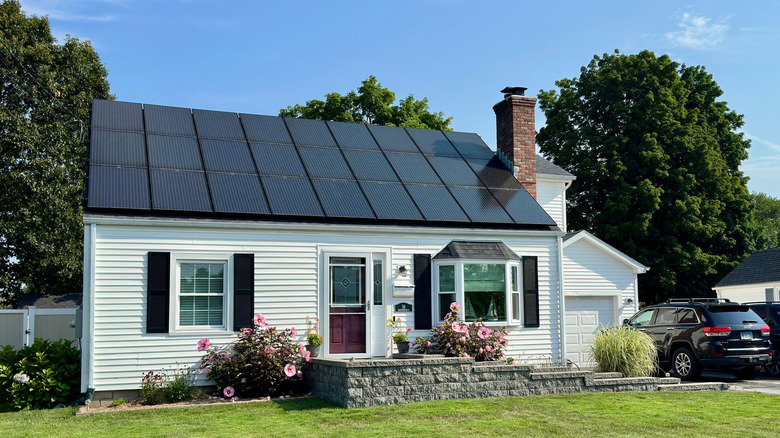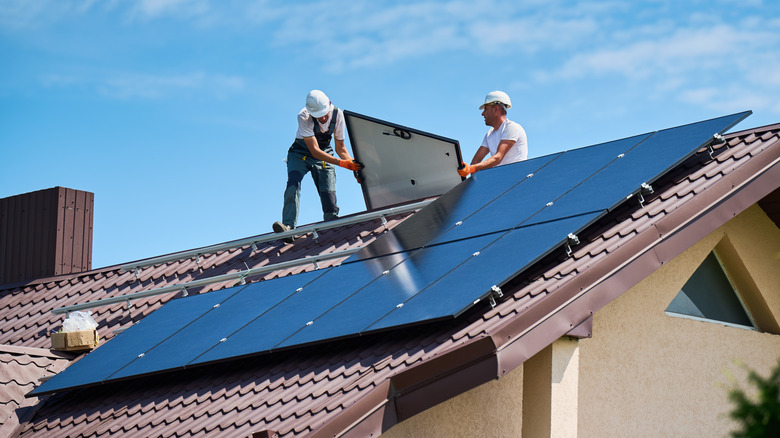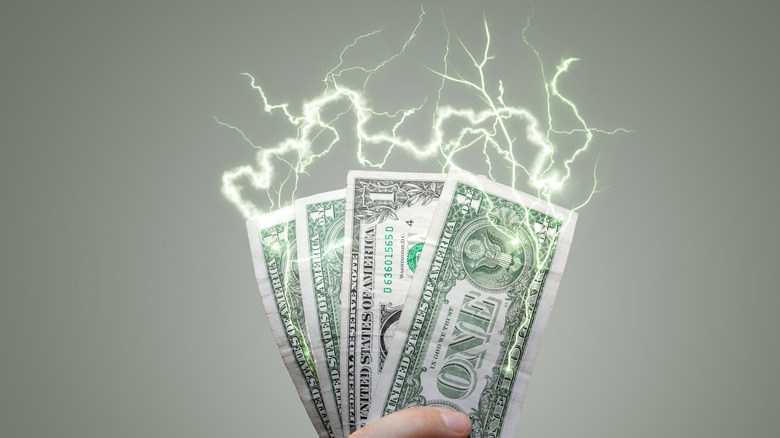You May Be Surprised By How Long It Takes Solar Panels To Pay For Themselves
A growing number of Americans view solar panels as a worthwhile investment. They are most often installed on the roof of homes in the hope that they will help save on the electric bill. Generating your own electricity should mean that you will purchase less from your utility, and in some cases, you may generate enough to sell back to your electric company. Solar panels may also increase your property value thanks to the clean energy that can help cut down on greenhouse gas emissions.
According to the Solar Energy Industries Association, more than five million homes have installed solar panels in the U.S., representing about 7% of American homes. Over half of that number have been installed since 2020 and more than 25% of those homes were motivated to do so thanks to the tax incentives offered by the federal government's Inflation Reduction Act.
Consumers believe that solar panels can deliver savings, but how long does it take for such an investment to pay off? The cost of solar panels depends on many factors, but a typical installation is about $30,000. It takes a homeowner an average of about 10 years to pay off the initial investment but it may be several years less for some and more for others. Unfortunately, President Donald Trump eliminated the residential solar investment tax credit and the program sunsets on December 31, 2025.
The ins and outs of residential solar
To harness the energy of the sun on top of your home, you'll need to contact a company that specializes in installing solar panels. These panels are made up of something called photovoltaic, or PV, cells which produce an electrical charge when hit with sunlight. This electric charge creates a direct current of electricity that must pass through an inverter to turn it into alternating current (AC). That's because our electrical grid — and the appliances we employ daily — use AC.
There's a lot to know before you consider installing solar panels. If your home is very small or surrounded by trees, it may not be eligible for solar panels. You should also consider the age and condition of your roof. If you have to replace it after you install solar panels, it will make the process much more complicated and expensive.
The upfront cost of your solar panel installation can be impacted by a variety of factors. These include the size of your system, any necessary additional equipment, and local rebates or credits. Some states offer better incentives than others and your utility company may also provide financial perks. If you finance the cost of installation, you'll also have to consider interest charges.
How to turn a profit from your solar panels
To navigate your way into profit, you'll have to consider more than just the upfront cost of your solar panels. You should also consider how much energy your system will produce and the cost of that electricity. This is where net metering comes into play. Net metering allows you to sell any excess energy that your panels generate back to your electric company. If you don't need the energy to power your home, it can be used to power someone else's. You should be able to do this even before your panels are paid off, but net metering is not available everywhere so be sure to ask before your solar panels are installed.
Solar panels are a substantial investment but as long as you plan to be in your home for several years, you will eventually see a profit. When installed by a professional, solar panels will last 25 to 30 years. To learn more about your upfront charge, any hidden costs you need to know about, and how long it will take for your solar panels to pay for themselves, contact a professional for a detailed quote.


